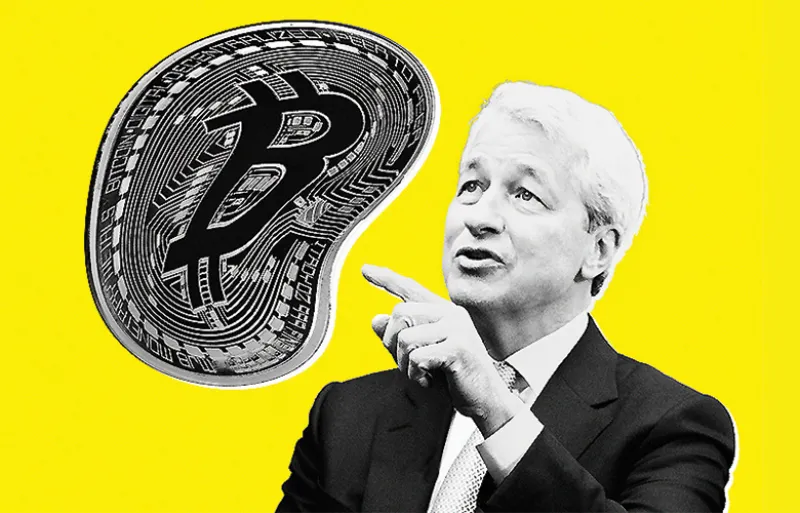At the recent Delivering Alpha conference, hosted by Institutional Investor and CNBC, JPMorgan Chase CEO Jamie Dimon tore into Bitcoin. “It’s worse than tulip bulbs,” he said. “It won’t end well. Someone is going to get killed.” He added that Bitcoin and cryptocurrencies in general “are not a real thing.”
Dimon’s rant, which was one of many banking titan rants against Bitcoin in recent weeks, was not so much a disavowal of Bitcoin as a strident public defense of the existing investment industrial complex. Frankly, he couldn’t care less about the price of Bitcoin; what he does care about is the continued hegemony of intermediaries.
The raison d’être of asset managers, custodians, banks, transition managers, consultants, and other services providers is to create “value” by inserting themselves into every function or service an asset owner needs.
They must maintain this model to ensure survival. Disruptive innovations built on the idea of disintermediation and decentralization are viewed as an existential threat that must be confronted.
Bitcoin is clearly one such innovation. While the value of Dimon’s “real” currencies comes from a trusted central authority, Bitcoin’s value comes from trust in its decentralized, peer-to-peer structure.
Intentionally or not, the proclamations of Dimon and others of a Bitcoin bubble hide what the banks and other intermediaries are doing to protect their turf.
In their eyes, the way to neutralize this and similar threats is to appropriate it in a way that dilutes it into a palatable, intermediated, nonthreatening form. The obvious example of this defense by misappropriation is Deloitte’s efforts to create “state-sponsored cryptocurrencies,” a notion completely anathema to the fundamental nature of cryptocurrencies but consistent with an intermediary-based model.
Blockchain, the technology at the heart of Bitcoin and other digital currencies, is another real threat to the intermediation model. Harvard professors Marco Iansiti and Karim Lakhani describe the blockchain as “an open, distributed ledger that can record transactions between two parties efficiently and in a verifiable and permanent way. . . . With blockchain, we can imagine a world in which contracts are embedded in digital code and stored in transparent, shared databases, where they are protected from deletion, tampering, and revision. In this world every agreement, every process, every task, and every payment would have a digital record and signature that could be identified, validated, stored, and shared. Intermediaries like lawyers, brokers, and bankers might no longer be necessary.”
Traditional institutions have responded to this risk by building proprietary, closed blockchains. JPMorgan is building its own blockchain, Quorum, which it describes as “an enterprise-focused version of Ethereum.” The misappropriation is obvious when we consider that Ethereum is itself “a decentralized platform that runs smart contracts . . . without any possibility of downtime, censorship, fraud, or third-party interference.” As AngelList founder and CEO Naval Ravikant tweeted: “It’s nonsensical to have a blockchain controlled by a sovereign, a corporation, an elite, or a mob.” But mission accomplished: The blockchain’s threat to centralized, exclusionary systems has been nullified; its functionality restricted.
Defenders of the orthodoxy use other means to impede the adoption of disruptive disintermediating ideas. For example, initial coin offerings (ICOs) are being successfully used by blockchain and technology startups to raise money directly from users. According to Goldman Sachs, ICOs raised more than $1.2 billion in funding for internet-based companies in the first half of 2017.
While Richard Kastelein, publisher of Blockchain News, describes ICOs as “a win-win” for entrepreneurs and investors, it’s important to note that there is a loser in this deal: Venture capitalists, the traditional middlemen of startup funding, are losing their influence and revenues. Goldman reports that in June the amount raised via ICOs for internet companies exceeded the amount raised by early-stage VCs.
Because ICOs are too difficult for intermediaries to directly appropriate, VCs instead must count on other defenders of the status quo — regulators — to disarm the threat. Recently the Securities and Exchange Commission said that securities trading laws might apply to ICOs; China also announced an immediate ban on ICO funding. This is reminiscent of the regulatory saber rattling when Uber challenged the need for a taxi medallion.
Other evidence of the defusing of the disintermediating innovations via misappropriation can be seen in the misapplication of advanced artificial intelligence techniques to investing. When Paul Tudor Jones says, “No man is better than a machine and no machine is better than a man with a machine,” he is claiming that the future of investing is augmented AI, deep learning be damned.
It’s critical that investors, especially fiduciaries, be aware of the vested interests embedded in the intermediary model and, more importantly, how this model has manipulated the relationships and outcomes in the investment industry.
When it comes to disruptive innovations, asset owners should expect asset managers and other intermediaries to attack them with hypocritical remarks while at the same time working to misappropriate them to ensure the perpetuation of the status quo.
After all, while Dimon was bashing Bitcoin, his San Francisco office was hosting a group of Bitcoin and blockchain investors.





